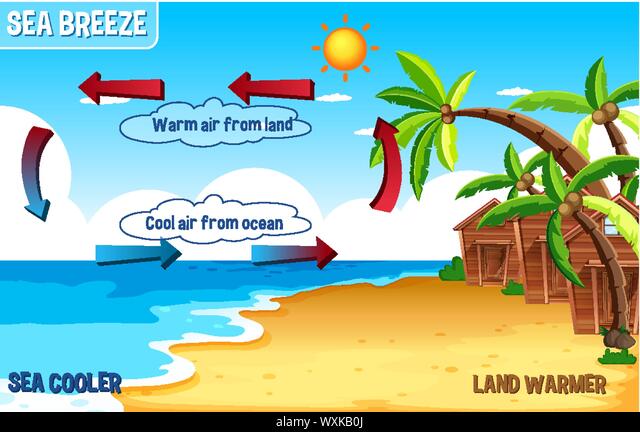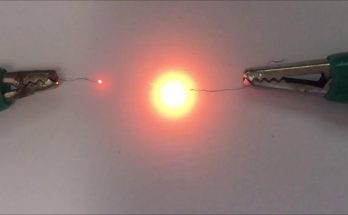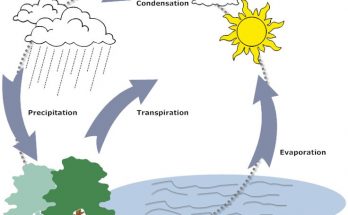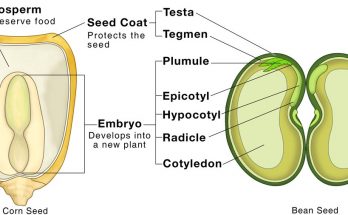Tick the correct answers.
1) Which of the following is a physical change?
- a) Melting of butter b) rusting of iron
- c) burning of paper d) changing of wheat to bread
Correct answer: (a) melting of butter
2) Milk turning sour is a :
- a) Physical change b) reversible change
- c) chemical change d) none of the above
Correct answer: (c) chemical change
3)……….. and salt are soluble in water.
a) Sugar
b) chalk
c) sand
d) kerosene
Correct answer: (a) sugar
4) In ice, the water molecules are/can
a) Stuck together
b) very close to each other
c) move around freely
d) move very fast
Correct answer: (b) very close to each other
5) the gas that bubbles out of an aerated drink is
- a) Nitrogen b) oxygen
- c) hydrogen d) carbon dioxide
Correct answer: (d) carbon dioxide
Short answer Questions .
- What is matter?
Answer: Matter is anything that takes up space and has weight.
- What are molecules?
Answer: All matter is made up of very small particles called molecules
- What are molecules made up of?
Answer: Each molecule of a matter is made up of two or more smaller units called atoms.
- Name any two solids, two liquids, and two gases that can dissolve in water.
Answer: (i) two solids that can dissolve in water : sugar, salt
(ii) two liquids that can dissolve in water : alcohol, milk
(iii) two gases that can dissolve in water : oxygen, carbon dioxide.
ALSO CHECK- Class 5 – Solid Liquid And Gases/ State Of Matter – Complete notes
Answer the questions
- Why do solids have a fixed shape?
Answer: solids have a fixed shape because the molecules in solids are tightly packed together which does not allow them to move freely.
- Why do liquids flow?
Answer: The particles in liquids are loosely packed which allows them to move easily. Thus, they take the shape of the container in which they are poured. Because of this property liquids can flow.
3. Write two differences between liquids and gases.
Answer: the two differences are:
| PHYSICAL STATE | SHAPE VOLUME |
| Liquid | Not fixed Definite |
| Gas | Not fixed Indefinite |
- When do we say that liquids are miscible?
Answer: when liquids dissolve completely in water to form solutions than we would say that liquids are miscible.
- What is a physical change? Give two examples.
Answer: A physical change is a temporary change which can be reversed and in which no new substance is formed.
Example: melting an ice cube, boiling water
6.What is a chemical change? Give two examples.
Answer: A chemical change is a permanent change which cannot be reversed and in which new substance is formed.
Example: burning of paper, milk going sour
- Give three characteristics features of a chemical change.
Answer: three characteristics features of a chemical change are:
- It causes permanent changes in state of the matter.
- new substance is formed
- This change is irreversible
Write true or false.
Air is a mixture of several gases such as nitrogen, oxygen, carbon dioxide, etc
Correct answer: True
Air contains dust particles and smoke.
Correct answer: true
Oxygen is taken in by green plants to prepare food.
Correct answer: true
Nitrogen in air controls the process of burning.
Correct answer: false
Air has no weight.
Correct answer: false
A gentle wind is called gale.
Correct answer: false
The land breeze takes place during daytime.
Correct answer: false
Summer monsoon wind brings rain in India.
Correct answer: true
Choose the correct option to fill in the blanks.
- Matter is made up of molecules that are very………….(large/small).
Correct answer: small
- In the case of solids, there is ……………(no/some) space between molecules. Correct answer: no
- Copper sulphate crystals are………………(solids/liquids).
Correct answer: solids
- Solids and …………….(gases/liquids) have fixed volume.
Correct answer: liquids
- Solute and …………….(gas/solvent) makes a solution.
Correct answer: solvent
Match the following.
- Gas i. Soluble in water
- Solution ii. Obtained by distillation process
- Chalk iii. Flows in all direction
- Pure water iv. Insoluble in water
- Honey v. sugar or salt dissolved in water
Correct answer:
- (iii)
- (v)
- (iv)
- (ii)
- (i)
Short answers questions
- Is the arrangement of all molecules in all states of matter the same?
Answer: No, the arrangement of all molecules in all states of matter is not the same. In solids the molecules are very tightly packed, in liquids the molecules are less closely packed. However, in gases the molecules are at large distances from each other and can move freely.
- Name the state of matter in which molecules are very loosely packed.
Answer: In gases molecules are very loosely packed.
- What is a solution? Give two examples.
Answer: A solution is a mixture in which two or more substances are combined in such a way that they evenly spread and mix with each other.
Example: sugar mixed with water, alcohol with water .
- What are soluble and insoluble substances in a liquid?
Answer: Substances that dissolve completely in water to form solutions are termed as soluble substances. For example: Salt, ethanol and sugar are soluble in water.
Substances that do not dissolve in a liquid to form solutions are called insoluble substances. For example: oil, sand, chalk are insoluble in water.
- Why is distilled water not suitable for drinking?
Answer: Distilled water is not suitable for drinking because it does not contain minerals that are present in drinking water.
- Define filtration with the help of an example.
Answer: the process of separating insoluble substances by passing the solution through filter paper is called filtration. Example: we can remove insoluble substances from solution(like impure water) by pouring into a funnel having a cone of filter paper. Insoluble substances are caught in the filter paper and the clear water passes through it and gets collected in a vessel called a filtrate.
- What are the different properties of air?
Answer: The different properties of air are:
- Air occupies space
- Air exerts pressure
- Air is needed for burning
- Air has weight
Long answers questions.
- Write three properties each of solids, liquids, and gases.
Answer: Three properties each of solids, liquids, and gases are:
Solids: –
- Solids have a definite
- Solids have a definite volume.
- Solids have a definite mass.
Liquids : –
- Liquids do not have a fixed shape.
- Liquids have a definite volume.
- Liquids have a definite mass.
Gases: –
- Gases do not have fixed shape and volume.
- A gas does not have a definite mass.
- The molecules in gases are very loosely packed
- How many types of solutions do you know? Explain with examples.
Answer:
| TYPE OF SOLUTION | EXAMPLES SOLUTE SOLVENT |
| Solid in liquid | Sugar water, lat water solid(sugar,salt) liquid(water) |
| Gas in liquid | Soda water, soft drink gas(carbon dioxide) liquid(water) |
| Gas in gas | air gas(oxygen) gas(nitrogen) |
| Liquid in liquid | Alcohol and water liquid(alcohol) liquid(water) |
- Write an activity to identify soluble and insoluble substances in water.
Answer: In order to identify soluble and insoluble substances in water, take a spoonful of sugar and a glass of water. Then, take some sand and another glass of water. Mix the sugar and and in their respective glasses. Stir it for a few minutes and observe . after some time we will observe that: i) sugar gets fully dissolved in water i.e sugar is soluble in water.
Sand will not get dissolved in water and gets collected at the bottom of the glass i.e, sand is insoluble in water.
Explain two methods to separate soluble substances.
Answer: We can separate soluble substances from a liquid(e.g; water) by boiling and distillation.
Boiling: in this process the soluble substances can be separated by heating the water(liquid). When all the water evaporates we will get the substance. Example: sugar and water solution is heated till the water evaporates leaving behind sugar particles.
Distillation: It is a method of purifying water generally performed in laboratories. The water collected after this process is called distilled water. It is free of any impurities.
How is the sea and land breeze formed?
Answer: sea breeze is formed during day time , when the sun shines, land gets heated fast due to which air above it gets heated and air expands . In that area a vacuum is formed , to cover it cool air above sea blows towards land and this is called sea breeze.
a land breeze is formed during night time. After the sun has set the land cools more quickly than water therefore the air above the land also cools down and the air above sea remains warm. The light warm air rises up. The cooler air above the land moves towards the sea to fill up the space. The cooler wind that blows from the land to the sea is called land breeze.
What are monsoon winds? How are they helpful to us?
Answer: the moisture-laden air that moves from the sea towards the land during summers is called monsoon breeze or monsoon wind.
They are helpful to us because these monsoon winds bring rain. In India, we get rainfall during the rainy season due to the wind.
Picture study.

Look at the picture given here and answer the following questions
- Does the picture depict sea breeze or land breeze?
Answer: the picture depicts the sea breeze.
- When does it occur-day or night? Draw a sun or moon accordingly.
Answer: It occurs during the day.
- Explain briefly, what is happening in the picture?
Answer: During the day, the land warms up faster than the water. This causes the air above the land to warm up. Warm air being less dense expands and rises leaving an area of low pressure . Meanwhile, the air over the ocean is cooler. The cooler and heavier hair sinks over the water creating an area of high pressure. The difference in pressure and temperature create a convection current. warm air over the land is replaced by the cool ocean air. The cooler wind that blows from the sea to the land is called the sea breeze.


